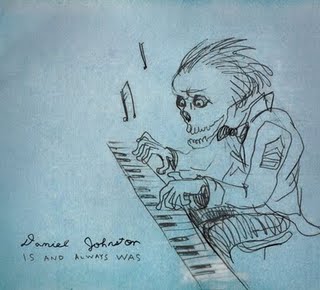Here’s an experiment: Ask someone of my generation (I’m 23) to name a few jazz artists they like. If they’re not fans, ask them to name any jazz artist at all—good or bad, older or more recent, doesn’t matter the instrument. Expect to hear responses like Miles Davis, John Coltrane, possibly Wynton Marsalis, maybe Louis Armstrong or Thelonious Monk, and—well, that’s about it.
Mention the names Art Farmer or Jimmy Smith or Art Blakey, or any of the other stars on the latest installment in the Jazz Icons DVD series, and you’ll cue up shrugs and blank stares. But rather than bemoan the fact, let’s instead stress the importance of the latest Jazz Icons set—fourth in this series—which preserves a collection of timeless, masterful 1960s concerts featuring some of the best damn playing (on drums, piano, hollow-body guitar, flugelhorn, you name it) audiences had ever heard.
Take Jimmy Smith. In the liner notes, blues DJ Bob Porter calls Smith “one of the four or five greatest jazz musicians of the last 50 years.” Today, his is a name mentioned almost exclusively in jazz circles and on jazz radio stations, yet he was a pioneer on the Hammond B3 jazz piano. Filmed in Paris in 1969, Smith’s concert treats you to not only a rich audio recording but crisp visuals of Smith’s prowess on the Hammond. In “The Sermon,” one of his’s biggest hits, you watch one hand anchor the melody on the lower manual (the bottom keyboard) while the other dances and improvises in a blur of soloing on the upper keys. The show’s 1969 date is important, too: You can hear early traces of funk slipping into Smith’s playing, a style especially suited to the jazz piano that you wouldn’t have necessarily have heard six years earlier.
Take, for instance, Erroll Garner‘s 1963 show from Jazz Icons 4, a virtuoso display of jazz piano that’s brighter and snappier and much more of one-man show. With his hair seemingly lacquered to his head, Gardner could pull off just about anything on a grand piano—and does in this Belgium concert. When you watch his hands fly over the keys on Cole Porter’s “I Get a Kick Out of You,” it’s easy to forget Garner has a backing band at all.
In Art Farmer’s 1964 BBC show, the opposite is true: Farmer’s band arguably shines brighter than the headliner. Renowned guitarist Jim Hall, who played with Sonny Rollins, at times steals the show from Farmer and his flugelhorn, and the pair’s interplay makes for a mesmerizing hour-long performance.
Beyond any single artist, though, Jazz Icons 4 is invaluable for the way it captures not just the music, but the experience of being there. The video quality—though in a black-and-white that can feel like a Rod Serling production—is superb. So is the camera work, trading between tight shots of Blakey’s drumming, say, and pans of the whole band (not to mention audience members in their browline glasses and bouffant hairdos).
For those not old enough to have witnessed an Art Farmer or Jimmy Smith in their heyday, Jazz Icons 4 may be the best way to relive their live performances. The set may also be the best hope of introducing young listeners to jazz legends of the past half-century who, without this series, would undoubtedly slip by.










